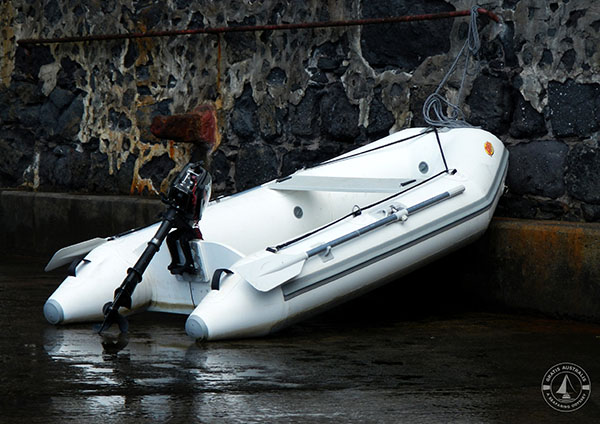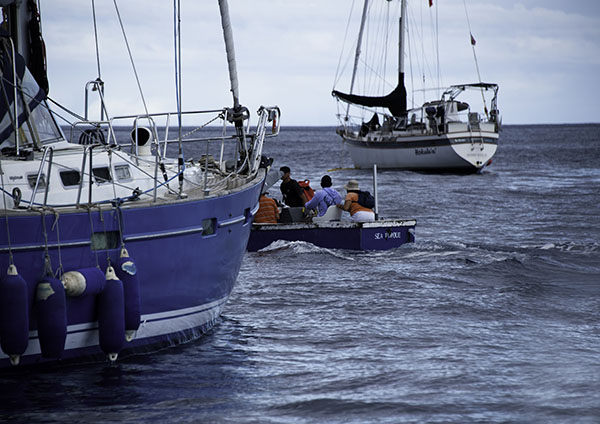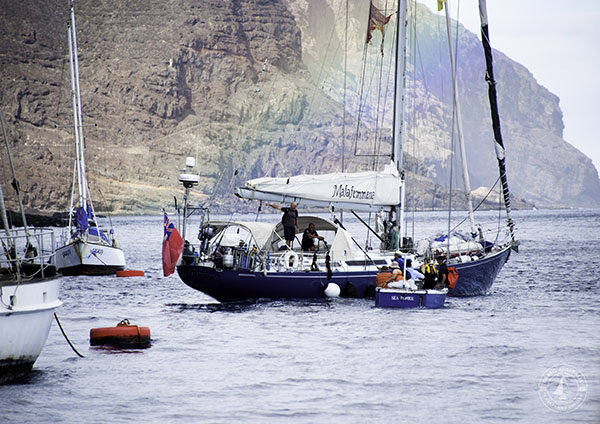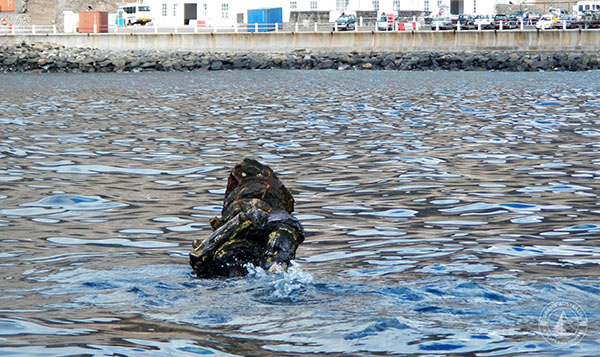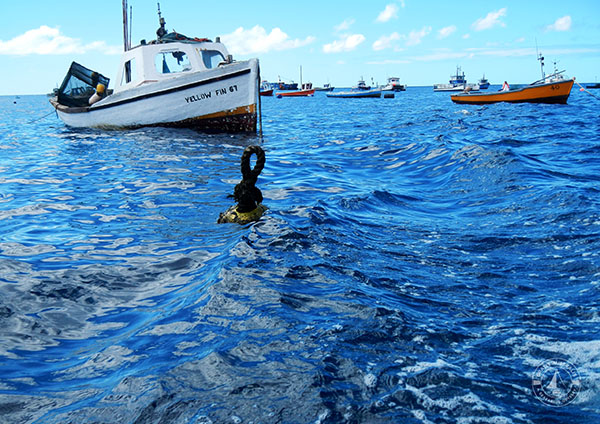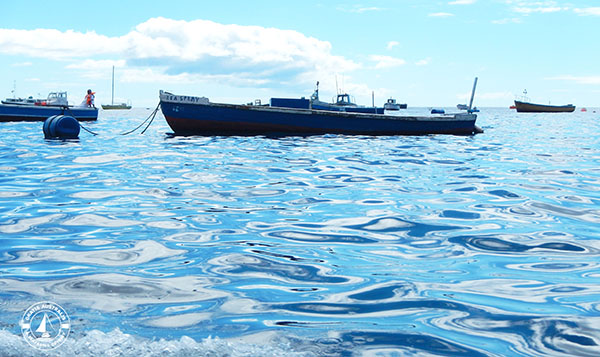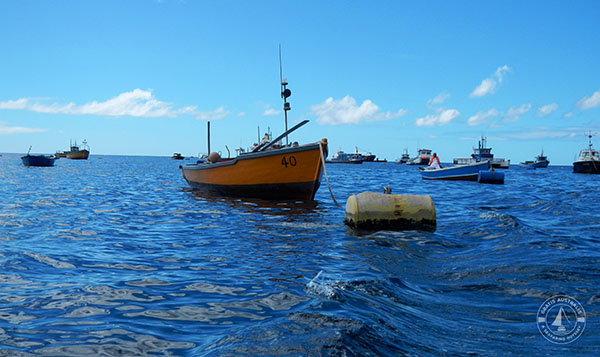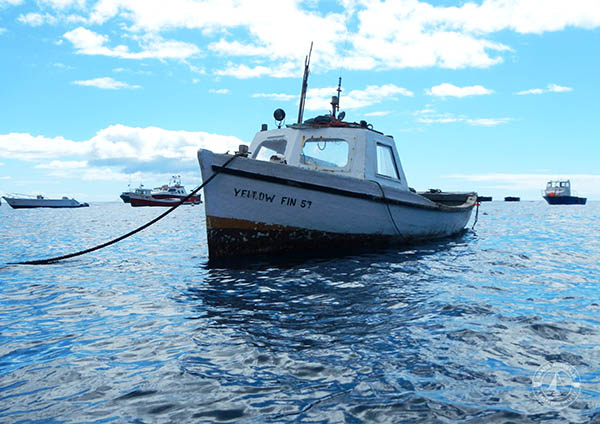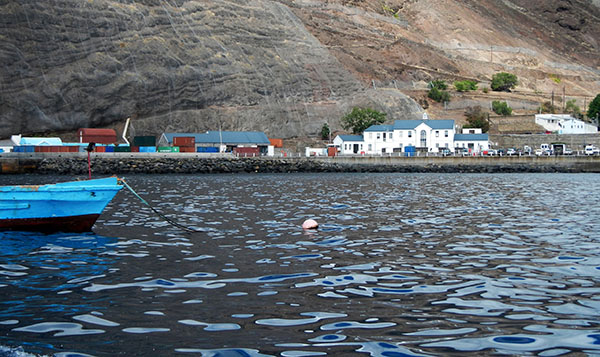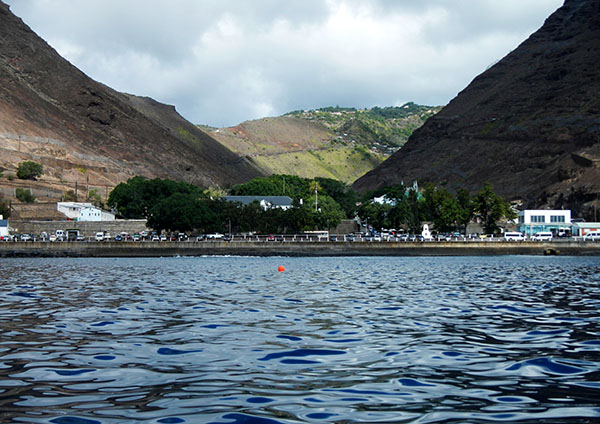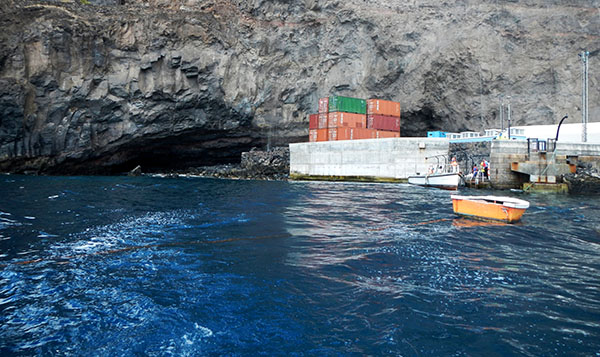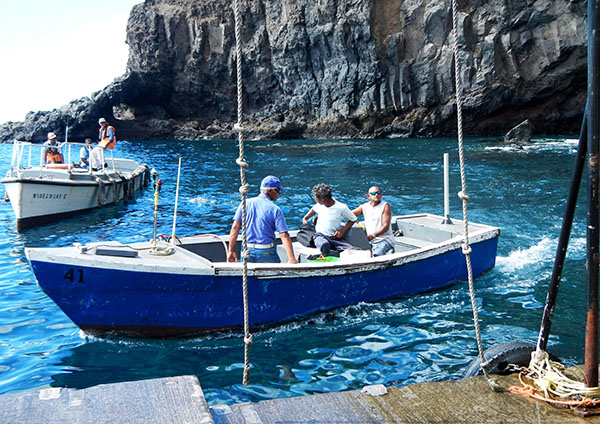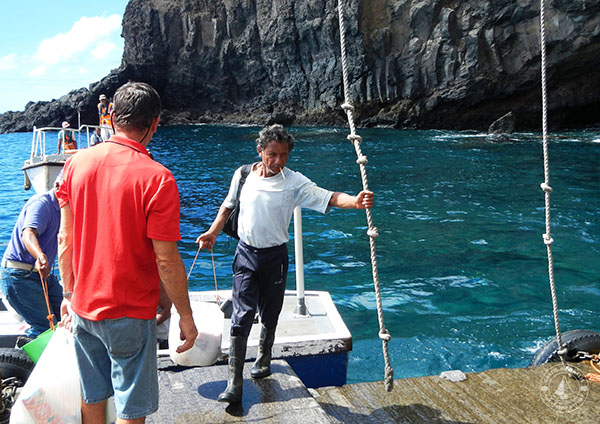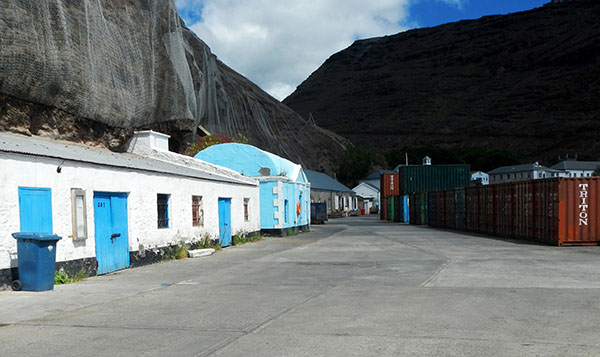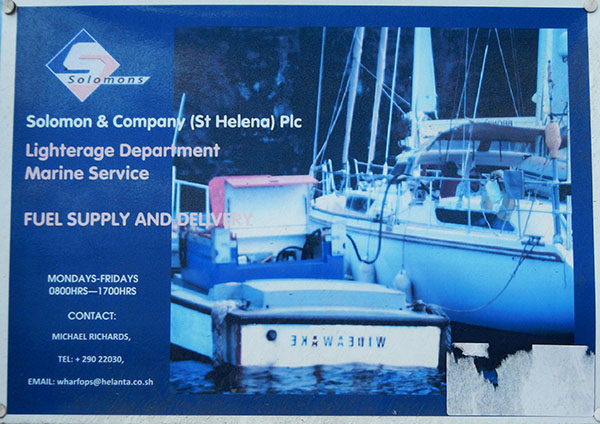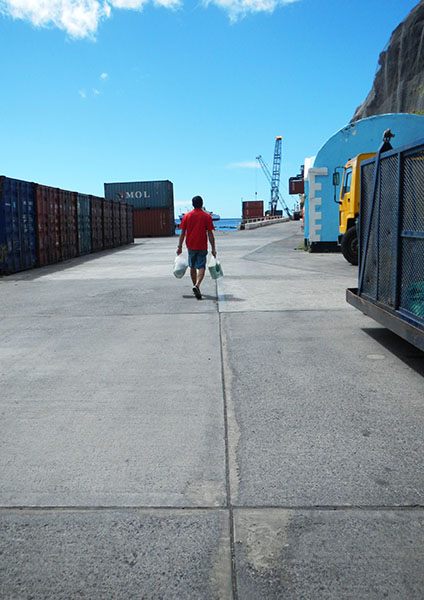After a peaceful night in which the murmur of the waters as they rolled and met the cliff lulled us into a deep relaxing slumber, we awoke refreshed as the morning light of the sun rose above the mountains, creating a pastel rainbow of rose pinks upon the cloud. With the heating of the land, a morning breeze for a short while arose, before gentling down once more.
Waters here were constantly rolling swells that bounced back upon meeting the cliffs. This in turn made the anchorage most uncomfortable as Big G continually rolled. Our first trip to shore saw us both experiencing the land moving beneath our feet for hours on end.
Gratis was moored in 17 metres of crystal clear blue waters, through which one could view the seabed below. No sharks to cause concern here, it was possible to enjoy a daily swim off the platform. What bliss, as this was a pastime not enjoyed in this way since our time in Grande Bay, Mauritius.
An experience not to be missed, was that of heading ashore on the water taxi. No beach, or safe mooring area available on which to leave the dinghy, this was the best option. Those who chose to use their own transport were presented with the task of hauling it upon the landing and dragging it as far from the water’s edge as viably possible.
At a charge of two dollars per ride, the taxi ferry was worth it. One radioed the taxi on VHF channel 16 and awaited pick up. This wooden boat, so reminiscent of the fishing craft used upon the Indian Ocean Islands, with a good inboard motor was the perfect solution.
The pilot see – sawed through the maze of moored watercraft, empty moorings and numerous wrecks, whilst simultaneously avoiding the worst of the swells as he motored toward the cliff face. Swells wended their way around the corner of the headland and continued running along the seawall, where waves proceeded to break before racing on their way into shore, whereupon they crashed upon the stone covered ‘beach’ in a mass of seething white foam.
Finally arriving at the landing, which was set against the base of the cliff face, the driver maintained a vigilant watch upon the waters.
Following the swell in its circular motion, he rode it into the landing. As the waters rose and fell, so did the boat. At last alongside, the taxi was carried forward and up as the swell rose to meet the height of the landing platform. Waiting for just the right moment as a new swell rose, into reverse went the boat and back the driver took it, manoeuvring the vessel until it arrived at the wall just as the swell brought it in upon the crest. It was now that the passengers could disembark.
Alighting was a feat in itself.
Our eyes boggled at their first sighting of the disembarking point. A stepped cement platform upon which the waters regularly washed, over which a metal frame arched. Upon the frame dangled a series of ropes, equal distance apart.
As the waters rose and fell, it was with trepidation that I stepped upon the gunwale and took hold of a rope. Awaiting for the moment at which the boat rose and drew level with the step – and a miniscule moment of time it was – without incident I stepped ashore, whilst releasing a massive sigh of relief. Later, we discovered this was also the local swimming area and that in calm conditions there was no fear of undertow. On days of large seas, the water taxi didn’t operate.
Once on shore, a picnic lunch was required as one moseyed along the dock up to the township of Jamestown. Built into the cliff base, protected by the long stretches of wire mesh cascading down its denuded slope – a protection against imminent landslides – buildings of blue and white lined the walkway (We also discovered that it was possible to top up with diesel here).
At last, the edge of the township, Jamestown – initially named Chapel Bay and later changed in honour of King James the second after the restoration of the English crown in 1660. A deep empty moat, created from the island’s stone, protected the settlement from the onslaught of Father Neptune. We were informed that storms were rarely experienced, and only passed through every three or four years.
Original whitewashed two story structures sat behind the battlement, through which the black tunnels of the cannons poked their noses – a reminder of the British fear of invasion in times past. Today these were the buildings for customs and immigration.
Passing beneath an archway upon which massive gates once hung, buildings of one and two stories, a mix of plain stone, whitewashed, or painted in pastels, lined both sides of the street as it ascended along the valley floor. Running through the town was ‘The Run’ A channel that followed the path of the ongoing stream, it was paved in stone during 1857, thereby acting as a sewer and water course.
Internet via satellite was only available upon the island, and quite expensive, whilst a network via underwater cable was planned to commence operations in late 2015, early 2016.
